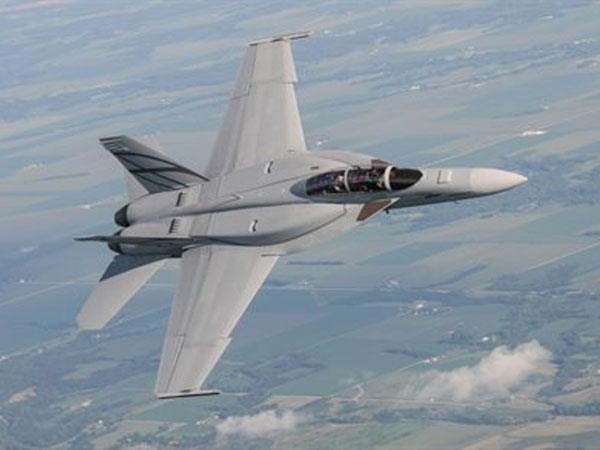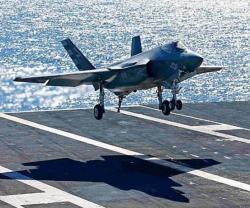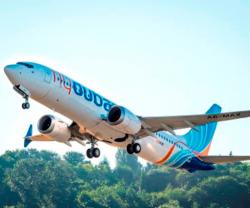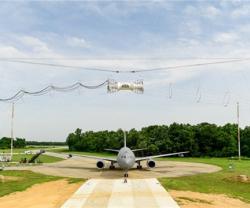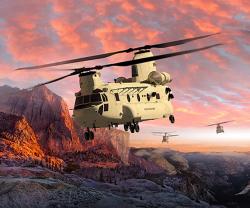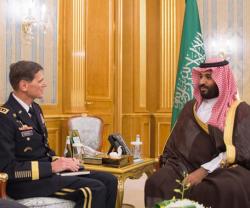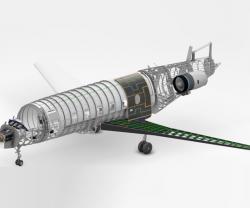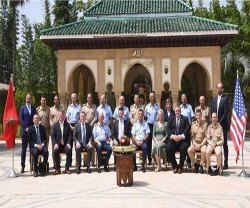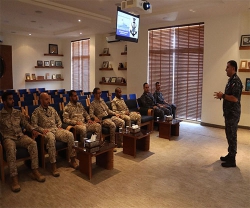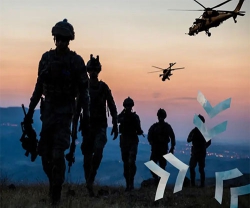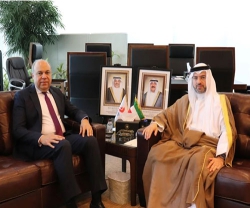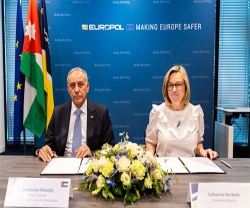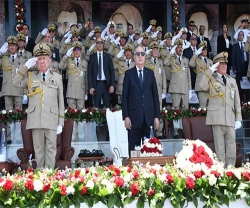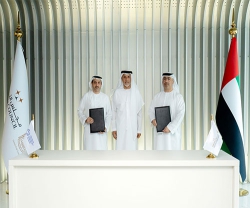Significant Improvements for Boeing’s Advanced Super Hornet
30.08.2013 North America
During three weeks of flight testing the Advanced Super Hornet, Boeing and partner Northrop Grumman demonstrated that the fighter can outperform threats for decades to come with improvements that make the jet much harder for radar to detect and give it significantly more combat range.
Through 21 flights in St. Louis and Patuxent River, Maryland., that began August 5, the team tested conformal fuel tanks (CFT), an enclosed weapons pod (EWP), and signature enhancements, each of which can be affordably retrofitted on an existing Block II Super Hornet aircraft or included on a new jet.
“We continually insert new capabilities into today’s highly capable, already stealthy Super Hornet, and the Advanced Super Hornet is the next phase of this technology evolution,” said Debbie Rub, Boeing Global Strike Vice President and General Manager.
“Boeing and our industry partners are investing in next-generation capabilities so warfighters have what they need when they need it, and so the customer can acquire it in a cost-effective manner,” Rub added.
Improvements to the aircraft’s radar signature, including the enclosed pod, resulted in a 50 percent reduction compared with the U.S. Navy’s stealth requirement for the current Super Hornet variant. The tests also showed that the CFTs increase the jet’s combat radius by up to 130 nautical miles, for a total combat radius of more than 700 nautical miles.
“Even though we added components to the aircraft, their stealthy, low-drag design will enhance the combat capability and survivability of the Super Hornet on an aircraft that has a combat-proven history launching and recovering from aircraft carriers,” said Mike Wallace, the Boeing F/A-18 Test Pilot who flew the Advanced Super Hornet configuration.
The improvements will ensure that the Advanced Super Hornet outpaces enemy aircraft and defenses through 2030 and beyond, especially when that enemy tries to deny access to a specific area, such as skies over international waters near its assets.
Boeing and Northrop Grumman funded the testing. The companies, along with Hornet Industry Team partners GE Aviation and Raytheon, are investing in more advanced technologies for the Advanced Super Hornet, including internal Infrared Search and Track, an enhanced engine and a next-generation cockpit.
Through 21 flights in St. Louis and Patuxent River, Maryland., that began August 5, the team tested conformal fuel tanks (CFT), an enclosed weapons pod (EWP), and signature enhancements, each of which can be affordably retrofitted on an existing Block II Super Hornet aircraft or included on a new jet.
“We continually insert new capabilities into today’s highly capable, already stealthy Super Hornet, and the Advanced Super Hornet is the next phase of this technology evolution,” said Debbie Rub, Boeing Global Strike Vice President and General Manager.
“Boeing and our industry partners are investing in next-generation capabilities so warfighters have what they need when they need it, and so the customer can acquire it in a cost-effective manner,” Rub added.
Improvements to the aircraft’s radar signature, including the enclosed pod, resulted in a 50 percent reduction compared with the U.S. Navy’s stealth requirement for the current Super Hornet variant. The tests also showed that the CFTs increase the jet’s combat radius by up to 130 nautical miles, for a total combat radius of more than 700 nautical miles.
“Even though we added components to the aircraft, their stealthy, low-drag design will enhance the combat capability and survivability of the Super Hornet on an aircraft that has a combat-proven history launching and recovering from aircraft carriers,” said Mike Wallace, the Boeing F/A-18 Test Pilot who flew the Advanced Super Hornet configuration.
The improvements will ensure that the Advanced Super Hornet outpaces enemy aircraft and defenses through 2030 and beyond, especially when that enemy tries to deny access to a specific area, such as skies over international waters near its assets.
Boeing and Northrop Grumman funded the testing. The companies, along with Hornet Industry Team partners GE Aviation and Raytheon, are investing in more advanced technologies for the Advanced Super Hornet, including internal Infrared Search and Track, an enhanced engine and a next-generation cockpit.
Latest news
Latest events
IDEF 2025 Turkey - International Defence Industry Fair
22 - 27 Jul 2025Istanbul Expo Center - TurkeyDSEI 2025
09 - 12 Sep 2025Excel, London - United KingdomIntersec Saudi Arabia
29 Sep - 01 Oct 2025Riyadh International Exhibition & Convention Centre - Saudi ArabiaDubai International Air Chiefs’ Conference (DIACC 2025)
16 Nov 2025Atlantis, The Palm Dubai - United Arab Emirates

